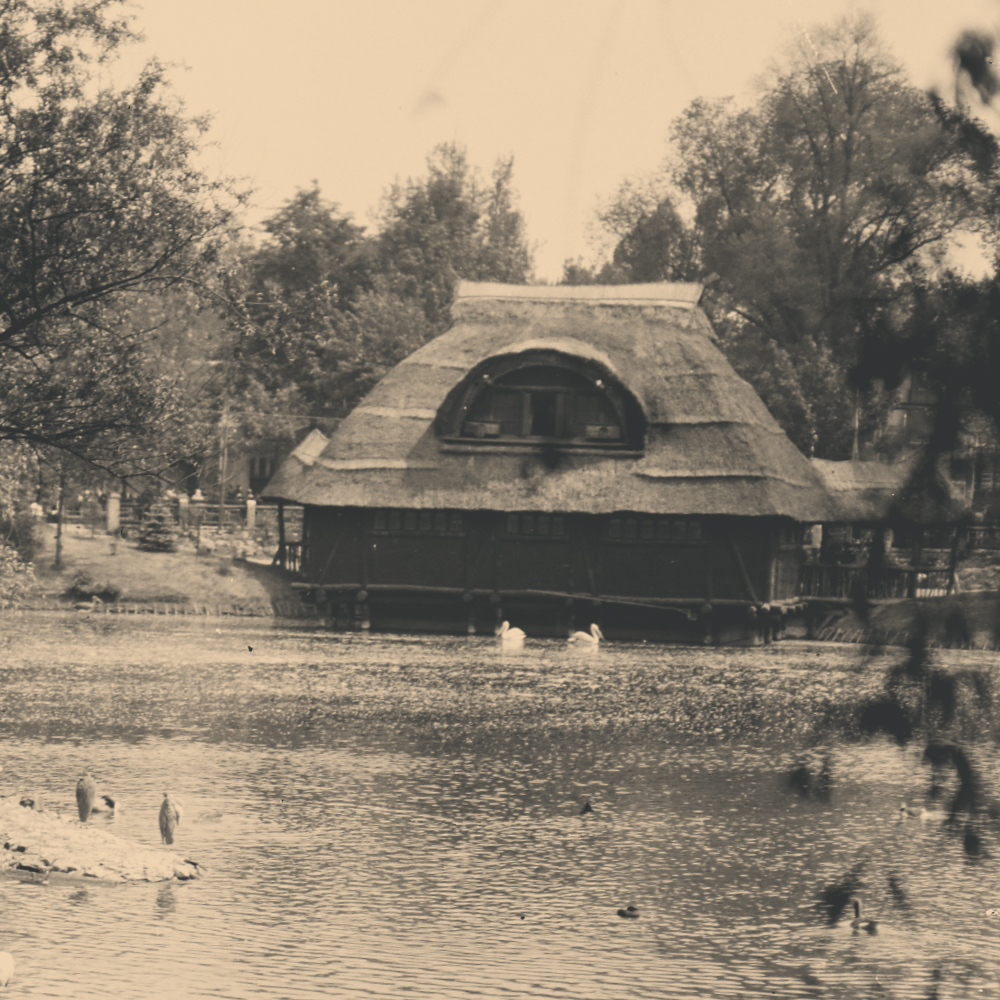
The City Park was considered to be a great hunting location with many fish in the waters and birds in the reeds. Bigger animals (bison, deer, wild boars) as well as smaller ones (rabbits, foxes, ducks) could also be found in the Park. After the zoo opened, several animals not indigenous to Hungary also arrived.
Two islands of City Park got their name of their characteristic animal (Peacock Island, Swan Island). Heinrich Nebbien, the designer of the City Park, kept horses and cows in his barn, in his yard he had hens, peacocks and geese too. Visitors could taste the milk and other dairy products of the local manor.
The most outstanding dairy farm, where Swiss, Hungarian, and Dutch animals were bred, was owned by MP Lajos Cséry. His farm gained nationwide popularity, and functioned for two decades on its original site.
The pond was also used as a fish farm. Fishing often ended with dinner parties with lots of music, dancing and eating fish.
After the Millennium Exhibition, the swans were given a new home on the shores of the big lake. After World War I, the animal population was not looked after, so its numbers declined continuously. In the end, they settled in the zoo, where Swan Island was made for them.
Vajdahunyad Castle was the main bat habitat in the city, due to the great nutritional opportunities of the lake in City Park. Half a dozen species of bats lived here at the time. Legends say that 25-year-old Nikola Tesla often took short walks in the City Park with his friend. On one of his walks, he envisioned the induction motor that he then quickly drew up in the dust of the walkway.











